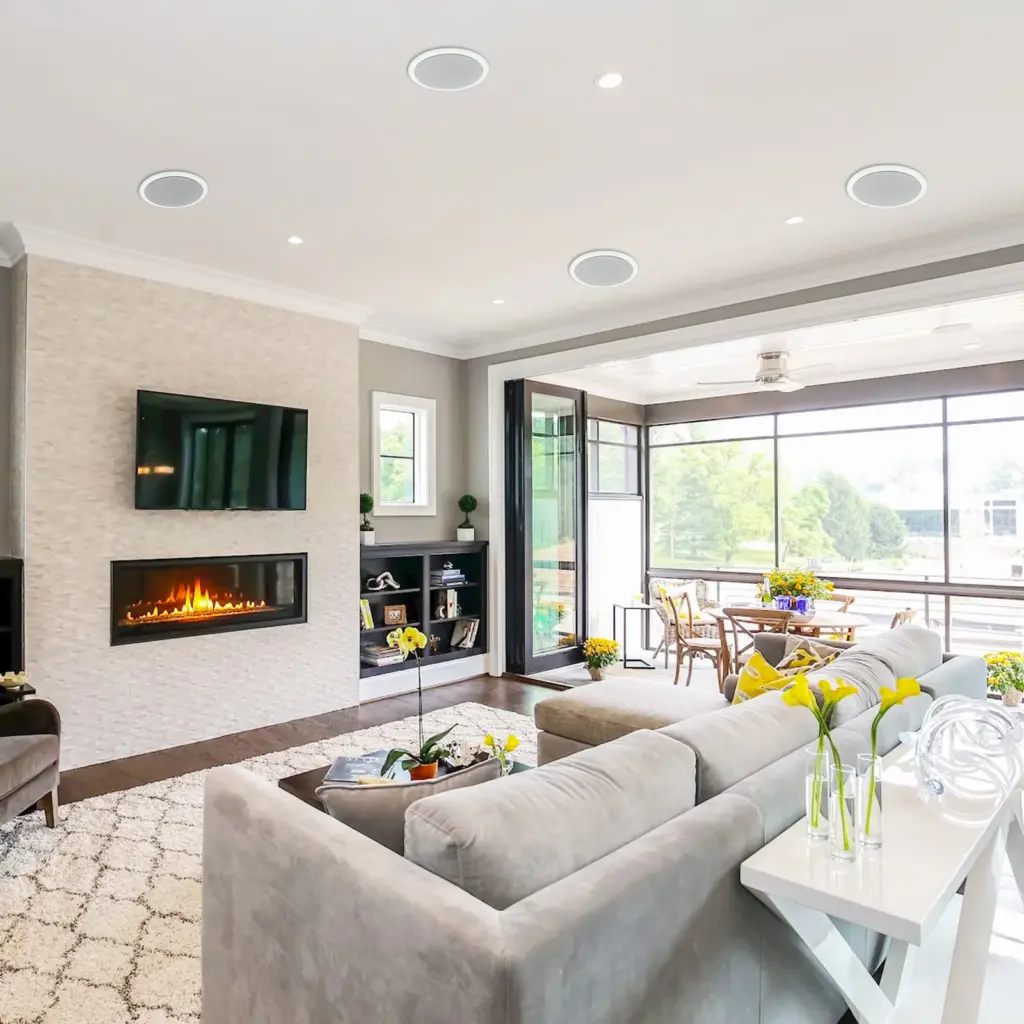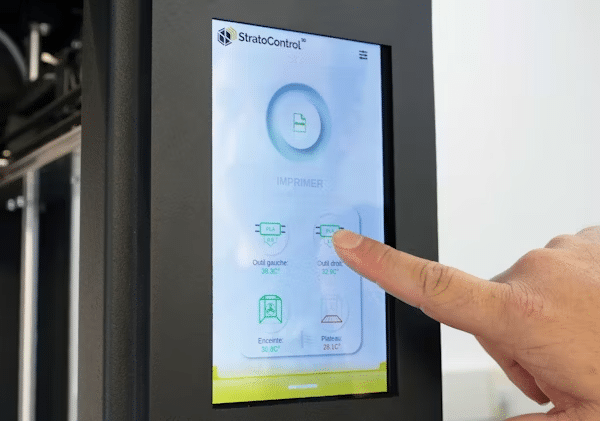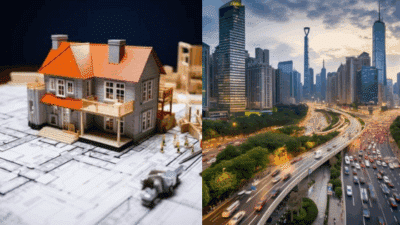
The line between interior design and technology has never been more beautifully blurred. Today’s homeowners aren’t choosing between aesthetic appeal and modern convenience—they’re demanding both. The contemporary home is a sophisticated ecosystem where elegant design principles harmonize with cutting-edge technology, creating spaces that are as intelligent as they are inviting.
This transformation represents a fundamental shift in how we conceptualize our living spaces. Gone are the days when technology meant visible wires, bulky equipment, and compromised aesthetics. The modern approach integrates functionality so seamlessly into the design that you’d never know your home was working overtime to enhance your comfort, security, and entertainment. It’s about creating environments that respond to your needs while maintaining the clean lines, intentional spaces, and personal style that make a house feel like home.
The Evolution of Home Design in the Digital Age

Our homes have always been reflections of the times we live in. Victorian homes showcased ornate details and compartmentalized rooms that reflected the social structures of their era. Mid-century modern design embraced open floor plans and large windows that brought the outdoors in. Today’s homes are evolving once again, this time shaped by our digital lives and the technology that powers them.
The shift began subtly. First, we hid our routers in cabinets. Then we started threading cables through walls instead of letting them snake across baseboards. But the real revolution happened when designers and technologists started collaborating from the blueprint stage, creating homes where technology wasn’t an afterthought to be concealed but an integral component planned with the same care as plumbing or electrical systems.
This holistic approach has given rise to what many are calling the “invisible smart home.” These are spaces where automation, connectivity, and advanced features operate behind the scenes, supporting your lifestyle without demanding attention or cluttering your visual space. The thermostat learns your preferences and adjusts automatically. Lighting shifts throughout the day to support your circadian rhythm. Security systems monitor your property while maintaining your home’s curb appeal.
What makes this approach particularly compelling is its focus on enhancement rather than replacement. The goal isn’t to live in a tech showroom but to use technology to amplify the human experience of home. It’s about walking into a room and having the lights adjust to the perfect level without thinking about it. It’s about enjoying your favorite music throughout your space without seeing a single speaker. It’s about feeling secure without turning your home into a fortress.
Invisible Technology: The Art of Seamless Integration

The most sophisticated homes are the ones where you don’t notice the technology—until you need it. This paradox drives some of the most exciting innovations in residential design. Take audio systems, for example. Music and sound have always played crucial roles in creating ambiance, but traditional speakers dominated wall space and dictated furniture placement. They were functional but often intrusive.
The solution emerged in the form of architectural integration. By incorporating audio components directly into the structure of your home, you gain the benefits of high-quality sound without sacrificing precious square footage or compromising your design vision. This is where ceiling speakers have revolutionized home entertainment. These discreet fixtures mount flush with your ceiling, delivering premium audio quality while virtually disappearing from view. They’re perfect for whole-home audio systems, home theaters, or simply creating the right atmosphere in specific rooms.
The beauty of this approach extends beyond aesthetics. Ceiling-mounted audio provides superior sound distribution, filling rooms more evenly than traditional floor or wall-mounted speakers. The elevated position eliminates dead zones and reduces the sound interference that can occur when speakers are placed at ear level among furniture and décor. Whether you’re hosting a dinner party, working from home, or relaxing with your favorite playlist, the sound simply exists in the space naturally, without announcing its source.
This integration philosophy applies to other technologies as well. Motorized window treatments hide within pockets above windows, maintaining clean lines while offering programmable light control. In-wall tablets provide smart home control without cluttering countertops. Wireless charging stations integrate into nightstands and desks, eliminating the tangle of cables that once plagued our spaces.
The key to successful integration is planning. During the design or renovation phase, consider how you actually live in your space. Where do you entertain? Which rooms serve multiple purposes? What activities require sound, lighting, or temperature control? By mapping your lifestyle onto your floor plan, you can identify the perfect locations for integrated technology that serves your specific needs rather than following a one-size-fits-all template.
Security That Doesn’t Compromise Aesthetics

While entertainment technology enhances how we enjoy our homes, security technology addresses something more fundamental: peace of mind. Yet traditional security systems often created an unwelcome visual presence. Obvious cameras, bulky control panels, and prominent alarm boxes could make homes feel more like commercial properties than personal sanctuaries. The challenge became clear: how do we protect our spaces without fundamentally altering their character?
Modern security solutions have risen to meet this challenge by prioritizing both form and function. Today’s systems recognize that a secure home shouldn’t have to sacrifice style or comfort. This shift has produced a new generation of security technology designed with aesthetic sensibility in mind—devices that are small, sleek, and sophisticated enough to blend into contemporary interiors.
The transformation is particularly evident in video monitoring technology. Where security cameras once meant obvious domes or protruding boxes, today’s options are remarkably discreet. A quality home cam can monitor your property while maintaining the design integrity of your space. These modern devices come in various styles—from minimalist cylinders that look like design objects to flush-mounted options that virtually disappear into their surroundings. Many feature weather-resistant housings in neutral finishes that complement exterior color palettes, ensuring your home’s curb appeal remains intact while security remains uncompromised.
Beyond aesthetics, these systems offer capabilities that were unimaginable just a few years ago. High-definition video quality captures clear footage day or night. Smart detection algorithms can distinguish between a passing car and someone approaching your door, reducing false alerts. Cloud storage eliminates the need for bulky recording equipment hidden in closets. Mobile apps let you check on your home from anywhere, receiving instant notifications when activity is detected.

The integration extends to how these systems interact with other smart home features. Your security cameras can trigger lights when motion is detected, creating both a security benefit and a welcoming ambiance when you arrive home after dark. They can integrate with smart locks, allowing you to verify visitors before granting access. Some systems even coordinate with thermostats, automatically adjusting temperature when they detect you’ve left for the day.
What’s particularly powerful about modern security design is its layered approach. Rather than relying on a single obvious deterrent, contemporary systems create multiple subtle safeguards. Doorbell cameras monitor front entries. Discrete outdoor cameras cover vulnerable points around the property. Smart locks track access. Window and door sensors alert you to any breach. Together, these elements create comprehensive protection without the fortress mentality of previous generations.
This approach also recognizes that different areas of your home have different privacy needs. Public spaces like entryways and driveways benefit from visible monitoring that deters unwanted visitors. Private spaces like bedrooms and bathrooms remain off-limits, respecting the sanctuary nature of those areas. The system adapts to your home’s architecture and your family’s needs, providing customized security that feels right for your specific situation.
Creating Cohesive Spaces Through Thoughtful Planning

The magic of the modern connected home isn’t in any single piece of technology—it’s in how all the elements work together to support your lifestyle. This requires thinking holistically about your space from the earliest planning stages. Whether you’re building new, renovating, or simply upgrading existing systems, approaching the project with a comprehensive vision yields dramatically better results than implementing technologies piecemeal.
Start by auditing your current space and identifying pain points. Which rooms lack adequate lighting control? Where does sound quality fall short during gatherings? Are there blind spots in your property where security feels lacking? What daily routines could be simplified through automation? These questions help prioritize investments and ensure that technology serves genuine needs rather than existing for its own sake.
Consider the infrastructure requirements early. Running wiring behind finished walls is exponentially more difficult and expensive than doing so during construction or renovation. Plan for more capacity than you currently need—technology changes rapidly, and flexibility built into your infrastructure today prevents costly retrofits tomorrow. Work with designers and installers who understand both the technical requirements and aesthetic implications of their recommendations.

Unified control systems tie everything together elegantly. Rather than juggling multiple apps and remotes, consolidated platforms let you manage audio, lighting, security, climate, and other systems from a single interface. These systems can create customized scenes that adjust multiple elements simultaneously—”Good Morning” might gradually increase lighting, adjust the thermostat, and start your coffee maker. “Movie Time” could dim lights, close shades, and optimize your audio system for cinematic sound.
The investment in integrated technology also pays dividends in property value. Homes with thoughtfully implemented smart features consistently command premium prices in real estate markets. Buyers increasingly expect modern conveniences, and homes that offer them without sacrificing design appeal stand out significantly. The key is ensuring that systems are user-friendly enough that new owners can easily understand and maintain them.
Maintenance and updates deserve consideration too. Quality systems from reputable manufacturers receive regular software updates that add features and improve performance over time. Cloud-based platforms evolve continuously, meaning your smart home actually becomes more capable as time passes. This stands in stark contrast to traditional technology that becomes obsolete the moment you install it.
The Future is Already Here

The connected home isn’t a futuristic concept—it’s the present reality for millions of homeowners who’ve discovered that technology and design aren’t opposing forces but complementary ones. When thoughtfully implemented, smart home features disappear into the background, supporting your lifestyle so naturally that you barely notice them working. They become part of the home’s character, as fundamental as the walls and windows.
This seamless integration represents a maturation of both technology and design philosophy. We’ve moved beyond the novelty phase where gadgets were interesting for their own sake. Today’s approach is more sophisticated, valuing restraint and intention. Technology earns its place by genuinely improving daily life, by solving actual problems, by creating moments of delight without demanding constant attention.
For homeowners considering this path, the opportunity has never been better. Products have become more refined, installation processes more streamlined, and costs more accessible. Whether you’re planning a major renovation or simply looking to upgrade specific systems, the tools exist to create spaces that are simultaneously more functional and more beautiful than ever before.
The key is maintaining focus on what matters most: creating a home that reflects your values, supports your lifestyle, and brings you joy. Technology should enhance those goals, not overshadow them. When you get the balance right—when form and function achieve true harmony—you create something remarkable: a home that feels both timeless and thoroughly modern, a space that works effortlessly because every element was chosen with care and integrated with purpose.
Your home is your sanctuary, your command center, and increasingly, your smartest investment. By embracing the possibilities of the connected home while staying true to good design principles, you create an environment that serves you better today while positioning you perfectly for whatever innovations tomorrow brings. That’s not just smart technology—it’s smart living.
- 0shares
- Facebook0
- Pinterest0
- Twitter0


